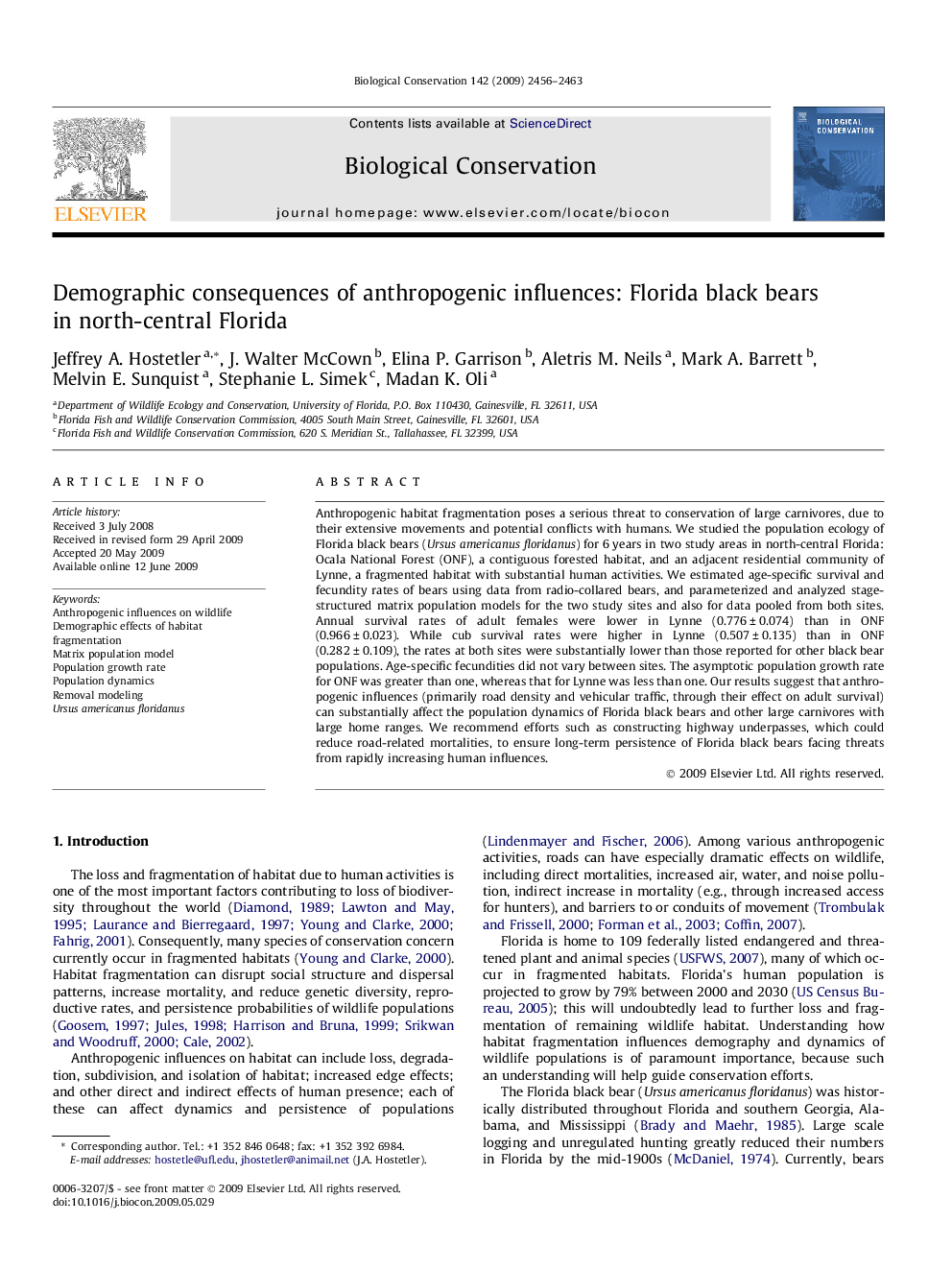| Article ID | Journal | Published Year | Pages | File Type |
|---|---|---|---|---|
| 4385846 | Biological Conservation | 2009 | 8 Pages |
Anthropogenic habitat fragmentation poses a serious threat to conservation of large carnivores, due to their extensive movements and potential conflicts with humans. We studied the population ecology of Florida black bears (Ursus americanus floridanus) for 6 years in two study areas in north-central Florida: Ocala National Forest (ONF), a contiguous forested habitat, and an adjacent residential community of Lynne, a fragmented habitat with substantial human activities. We estimated age-specific survival and fecundity rates of bears using data from radio-collared bears, and parameterized and analyzed stage-structured matrix population models for the two study sites and also for data pooled from both sites. Annual survival rates of adult females were lower in Lynne (0.776 ± 0.074) than in ONF (0.966 ± 0.023). While cub survival rates were higher in Lynne (0.507 ± 0.135) than in ONF (0.282 ± 0.109), the rates at both sites were substantially lower than those reported for other black bear populations. Age-specific fecundities did not vary between sites. The asymptotic population growth rate for ONF was greater than one, whereas that for Lynne was less than one. Our results suggest that anthropogenic influences (primarily road density and vehicular traffic, through their effect on adult survival) can substantially affect the population dynamics of Florida black bears and other large carnivores with large home ranges. We recommend efforts such as constructing highway underpasses, which could reduce road-related mortalities, to ensure long-term persistence of Florida black bears facing threats from rapidly increasing human influences.
